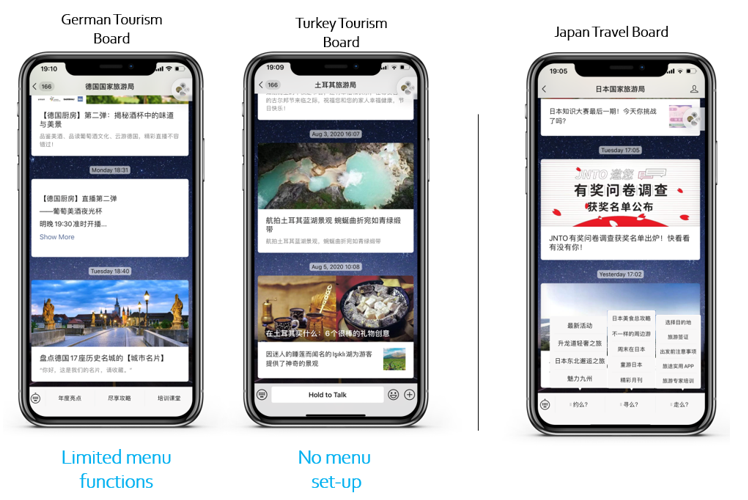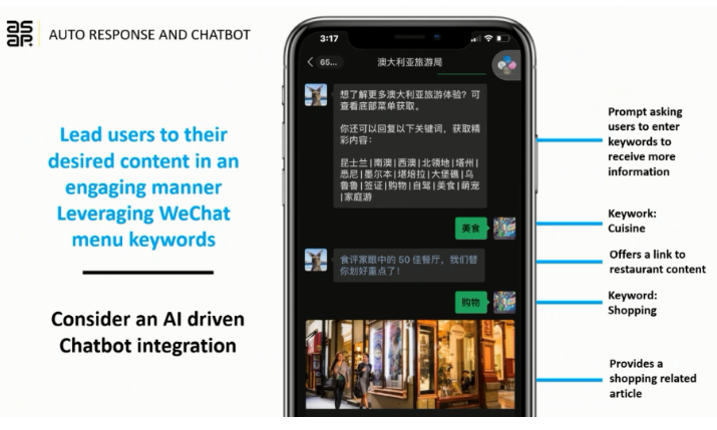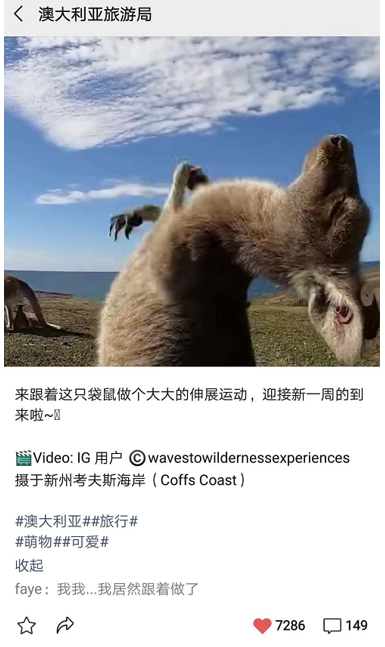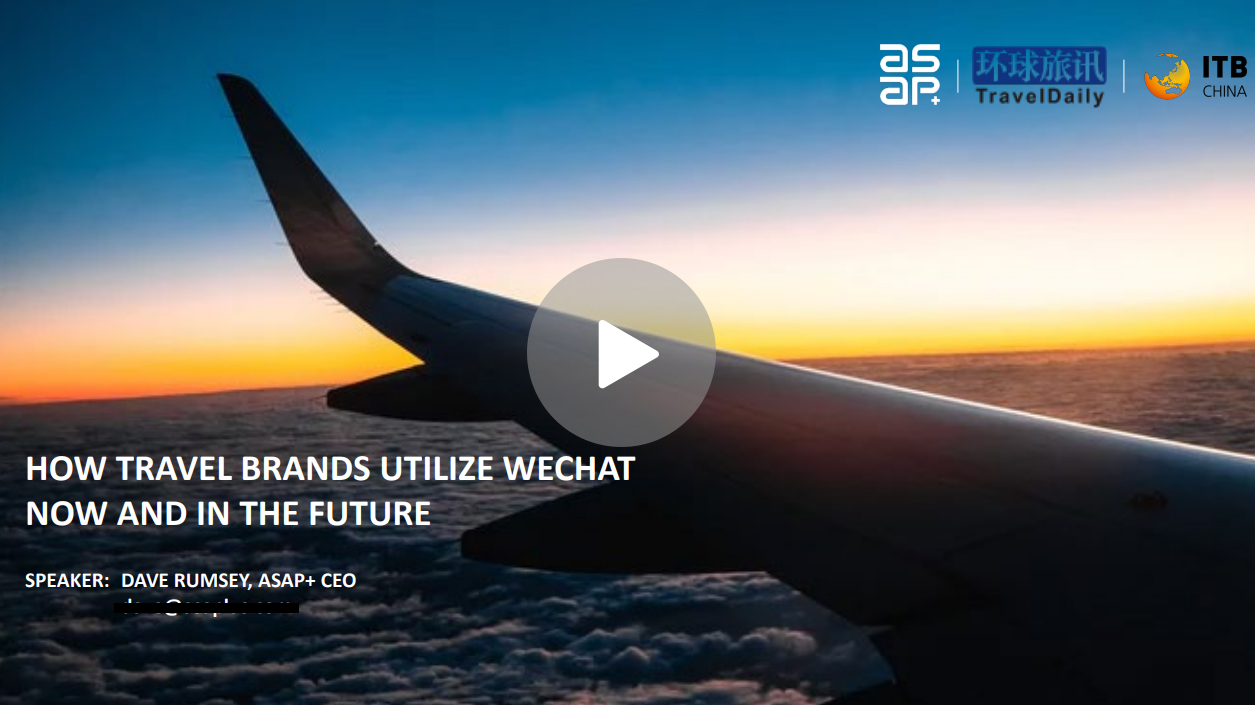ChinaTravelNews, Jerry Tang - During a recent webinar hosted by TravelDaily China and co-hosted by ITB China, Dave Rumsey, CEO of digital marketing expert ASAP+, pointed out that travel and retail brands need to reassess their investment and performance on the WeChat platform, by looking into content curation, menu design, function improvement and sales channel building.
Content
For content communication, Mr. Rumsey said destination brands should keep on crafting inspirational messages that will encourage Chinese travelers to imagine future trips and destinations that are both welcoming and safe.
A case in point is Tourism New Zealand, which sent out a one-minute video, with people from all walks of life sharing their feelings and thoughts about life in the country. The simple but genuine messages by these people built an approachable and welcoming image for the destination.
Functions
In terms of menu functions on WeChat’s Official Accounts, Mr. Rumsey thinks that travel and destination brands should take a fresh look at their own account settings and try to learn from what leading or creative players are doing on WeChat. For example, Japan National Tourism Board is using playful language to design a creative and engaging menu bar on WeChat.

To further improve functionality on WeChat, travel brands should consider implementing auto-response and chatbot solutions, according to Mr. Rumsey.
“The most forward-thinking brands understand that consumers want to interact in a way that they do every day with each other – through conversations,” he said. “Using auto response is very cost-effective and easy to configure.”

Commerce channel
Beyond just staying in touch with the audience, Mr. Rumsey also recommended that travel brands should leverage WeChat’s mini programs to establish points of sales on the social network.
He stressed that brands should consider an in-destination travel concierge mini program that will provide destination information, in-store registration, bookings for hotels and tourist attractions, travel guides and AI assistant.
Going from “WeChat 1.0” to “WeChat 2.0”, Mr. Rumsey said brands should evaluate the option to utilize a Social CRM tool, so that they can understand the followers and their behaviors in a systematical matter. The tool may allow brands to segment their audience into different groups and even segment branded content pushes.
Video interactions
This year, the WeChat system launched a new video channel where people can share and interact with each other through short videos. Unlike traditional Official Account articles with multi-media contents, the short video channel opened a new window for brands to engage the audience.
How should travel and retail brands fully leverage the video channel to tell a better brand story?
Western brands are extensively using Instagram to reach and engage their target audience. And Mr. Rumsey said the idea of the WeChat channel is similar to that. The key is to engage users with short, interesting and sharable videos that encourage responses.
“It’s not just showing the branded content, but also being a bit playful with the content,” he said.
For example, Tourism Australia posted a short video on WeChat’s newly launched video channel showing a kangaroo stretching its body. The video was popular and received more than 7,200 likes. Mr. Rumsey said people like to share these funny short videos and that will help brands get their content better disseminated.

Instant responses
Looking ahead, the world is still wrapped up in the uncertainties arising from COVID-19, so how should brands stay in touch with their target audience on WeChat?
Mr. Rumsey thinks that lots of brands lost the opportunities to deeply engage with their new followers on social media. He advised that brands should make good use of the WeChat conversation window to answer the audience’s questions instantly instead of leading them to yet another layer of service menu.
“Brands should effectively give the audience the information they need as quickly as possible,” Mr. Rumsey said. “That might be enough for them to make the decision to convert. Being able to quite specifically respond in conversation with the audience is key to differentiate with other brands.”
* Click here for webinar playback
* Click here to download the presentation slides





